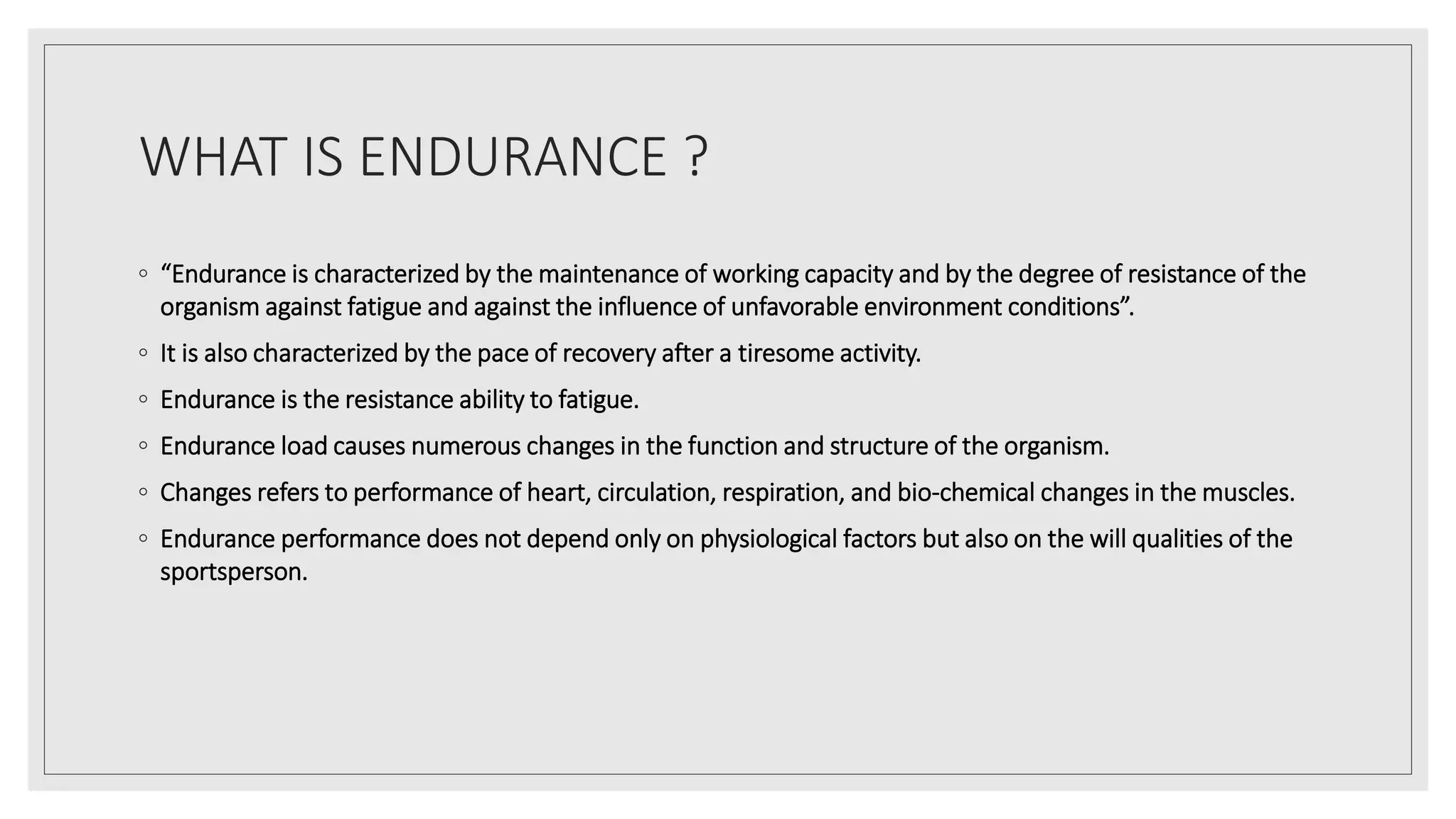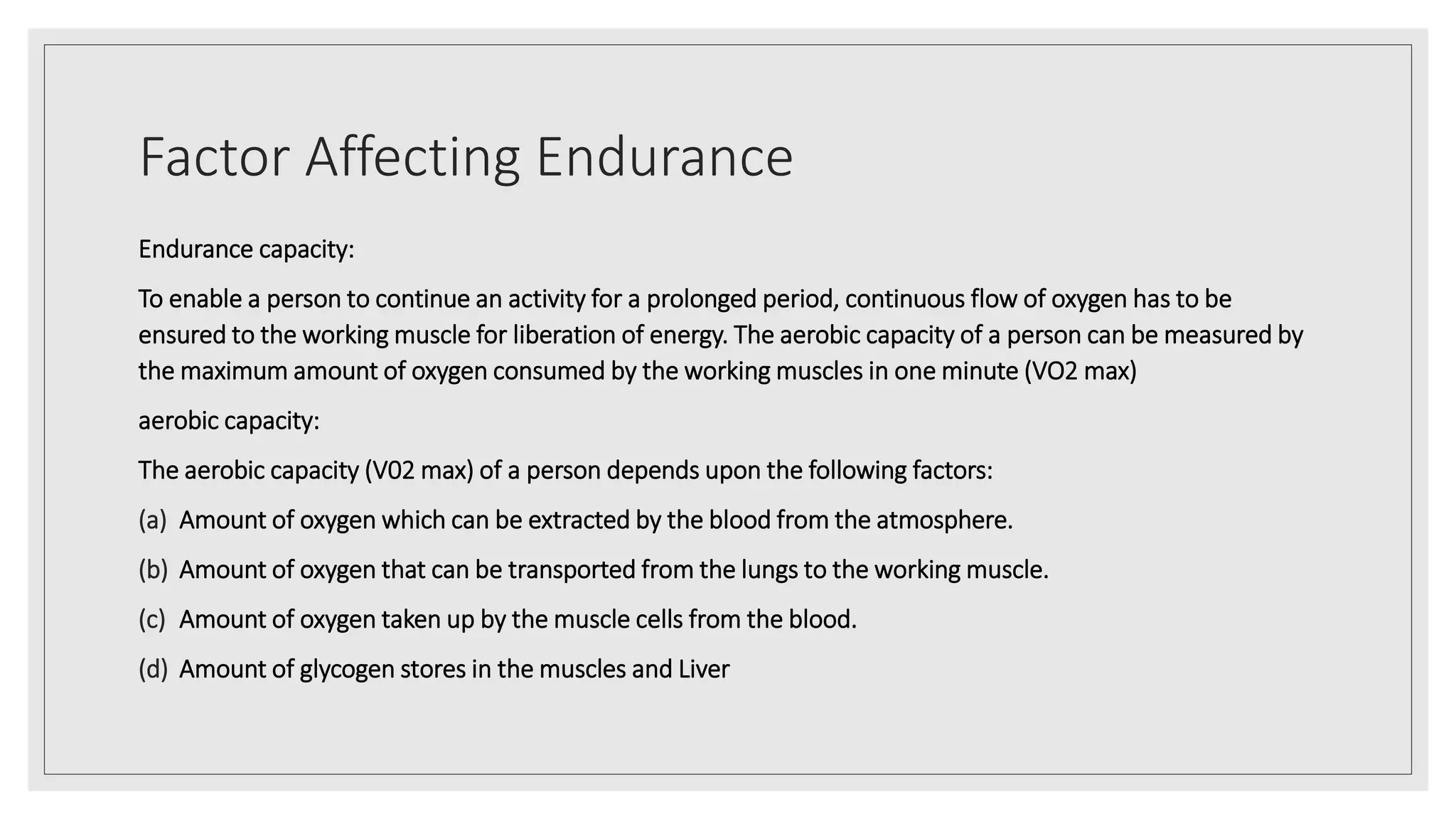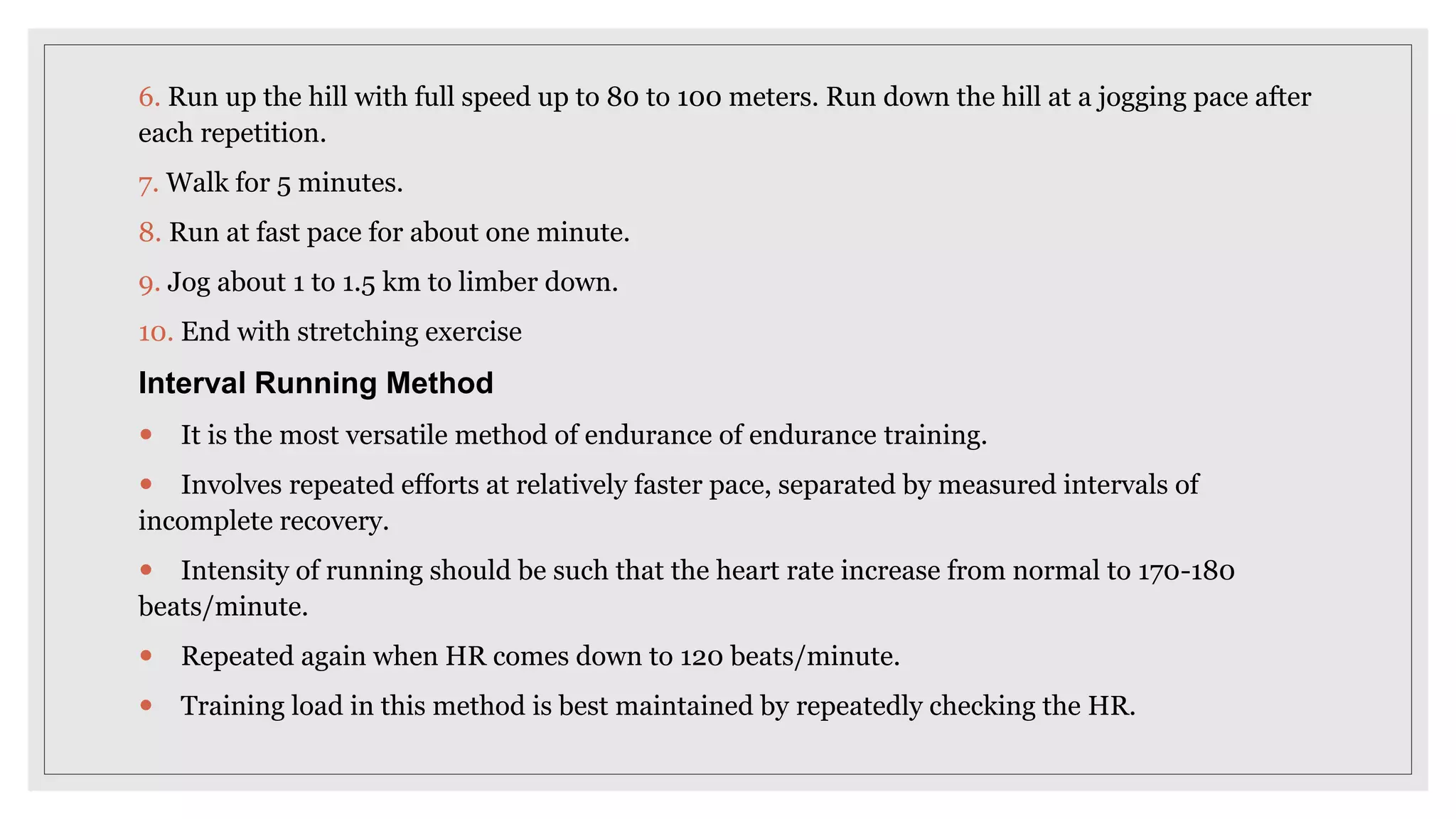This document defines and describes different types of endurance. It discusses basic, speed, sprint, and strength endurance based on the nature of activity. It also discusses short, middle, and long time endurance based on duration. The document outlines factors that affect endurance capacity like aerobic capacity and anaerobic capacity. It then describes various training methods to develop endurance like duration load method using constant, alternating and fartlek approaches as well as interval running, repetition training methods.



















